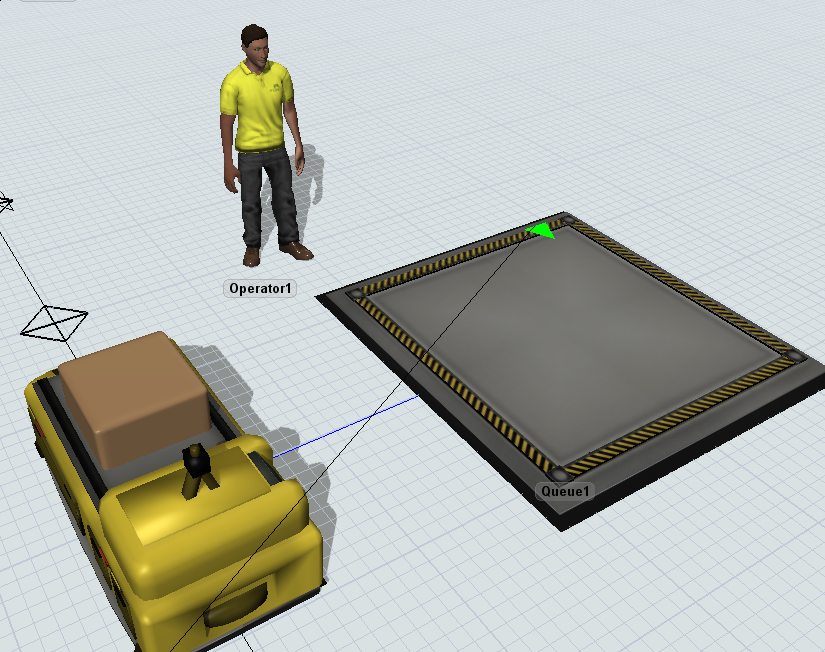I am making a simulation model of AGV.
Is it possible for Operator1 to create a task to unload a FlowItem from TaskExecuter?

I am making a simulation model of AGV.
Is it possible for Operator1 to create a task to unload a FlowItem from TaskExecuter?

Hi @Taro Y, was one of Felix Möhlmann's or Jason Lightfoot's answers helpful? If so, please click the "Accept" button at the bottom of the one that best answers your question. Or if you still have questions, add a comment and we'll continue the conversation.
If we haven't heard back from you within 3 business days we'll auto-accept an answer, but you can always unaccept and comment back to reopen your question.
To do this, you could listen to the 'On Finish Task' event of the task executer. In the trigger, you check whether the next task is the unloading. If that is the case, the task executer sends a message to itself. In the message trigger it then creates a new task sequence to preempt itself and abort the unload task. It then also dispatches a task sequence to the operator which has it load the item from the task executer and move it into the queue.
I first tried doing this in the 'On Finish Task' trigger directly, but that lead to errors and eventual corruption of the model - FlexSim doesn't like tinkerung with task sequences during that event.
The task sequence that is dispatched to the operator also includes the task to send a message after the item was loaded. This message then causes the task executer to add a travel task to the previously created preempting task sequence.
unloadtest-with-worker-fm-triggers.fsm
I do want to mention that the entire logic, including the transport from Queue0, can also be build in process flow. Which is quite a bit simpler in my opinion, because you don't have to deal with aborting the task sequence and creating the sequence for the operator 'manually' in the trigger code.
The attached model uses an instanced process flow to control the task executers. They first drive to ControlPoint1. Then they pull a waiting item from a list, onto which they are pushed in the 'Use Transport' option of the Queue. Afterwards they travel to the destination. When they arrive, a separate token is created that deals with the operator unloading the item. This loop os then repeated.

Here's the coordinated task sequence version using the transport dispatcher trigger - and has updated PassTo on the dispatcher to find the closest agv. I've also changed the dispatcher references on the queue to labels instead of centerport references.
16 People are following this question.
FlexSim can help you understand and improve any system or process. Transform your existing data into accurate predictions.
FlexSim is a fully 3D simulation software environment. FlexSim can be used to simulate any process in any industry.
FlexSim®, FlexSim Healthcare™, Problem Solved.®, the FlexSim logo, the FlexSim X-mark, and the FlexSim Healthcare logo with stylized Caduceus mark are trademarks of FlexSim Software Products, Inc. All rights reserved.
Privacy | Do not sell or share my personal information | Cookie preferences | Report noncompliance | Terms of use | Legal | © Autodesk Inc. All rights reserved